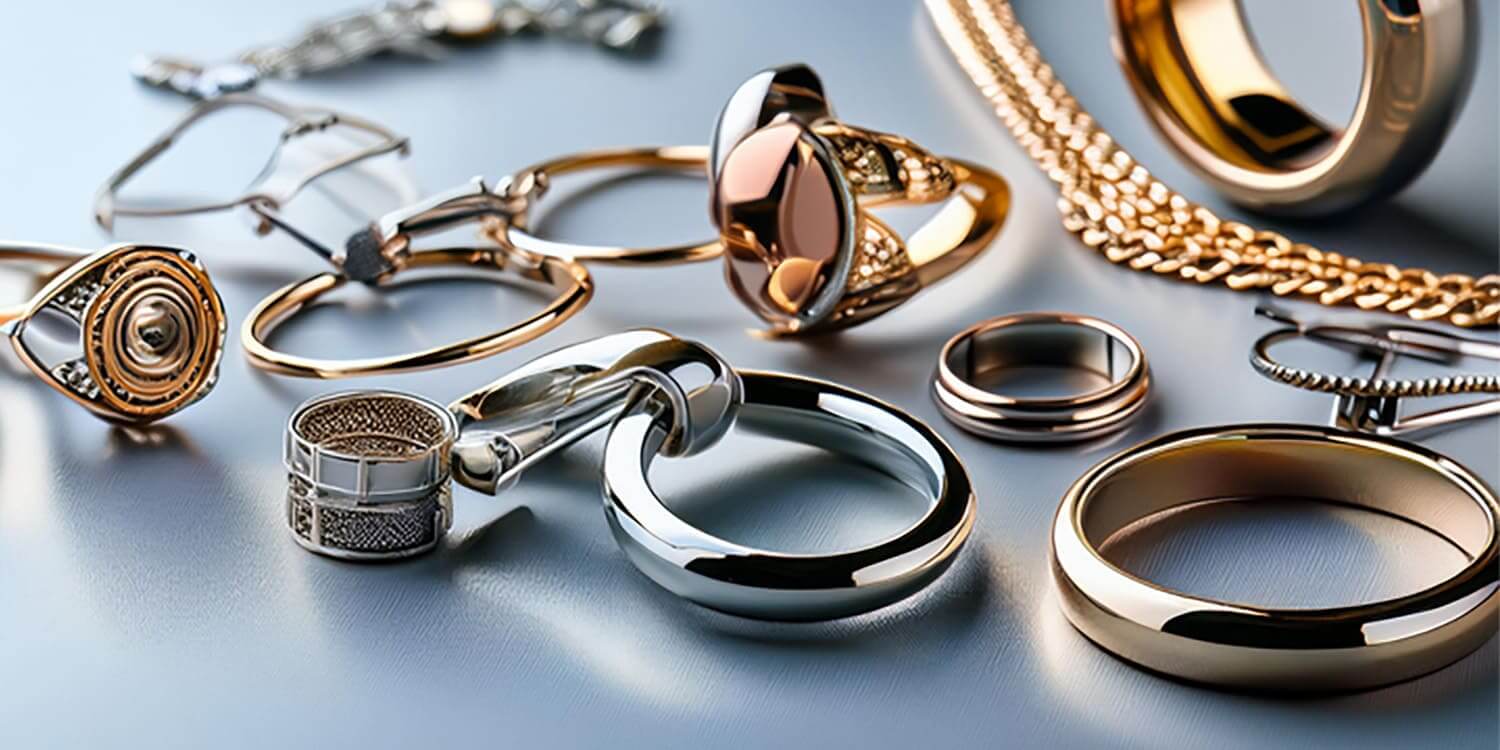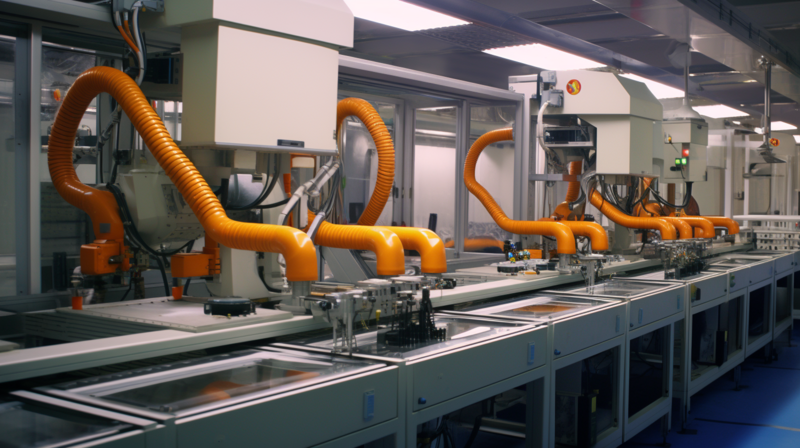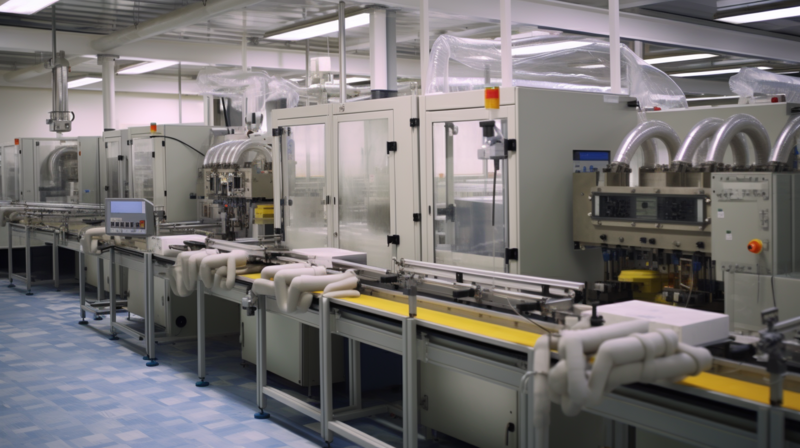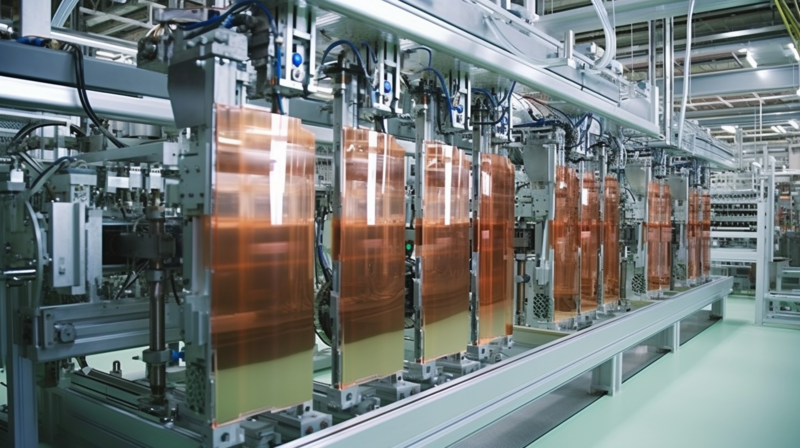ภาพรวม
- การชุบโลหะด้วยไฟฟ้า (Electroplating) เป็นเทคนิคการปรับปรุงพื้นผิวที่ได้รับความนิยมอย่างแพร่หลายในหลากหลายอุตสาหกรรม โดยเฉพาะกับพื้นผิวโลหะ วัตถุประสงค์หลักคือการเพิ่มชั้นป้องกัน การตกแต่งเพื่อความสวยงาม และการปรับปรุงการนำไฟฟ้า อย่างไรก็ตาม กระบวนการนี้อาจทำให้เกิดสารเคมีอันตรายระหว่างการผลิตได้
- การชุบโลหะด้วยไฟฟ้าเป็นการยึดเกาะไอออนโลหะเข้ากับวัสดุผ่านกระบวนการอิเล็กโทรไลต์ โดยมีการใช้ขั้วบวก (Anode) ขั้วลบ (Cathode) และสารละลายอิเล็กโทรไลต์ (Electrolyte) ซึ่งโลหะแต่ละประเภทมีคุณสมบัติที่แตกต่างกัน เพื่อรองรับความต้องการในด้านการตกแต่ง การป้องกัน หรือการใช้งานเฉพาะทาง
- วิธีการชุบโลหะด้วยไฟฟ้ามีหลากหลาย เช่น การชุบแบบแร็ค (Rack Plating) การชุบแบบถังกลิ้ง (Barrel Plating) และการชุบแบบฟลูอิไดซ์เบด (Fluidized Bed Plating) ซึ่งแต่ละวิธีเหมาะกับชิ้นงานและความต้องการที่แตกต่างกัน และมีบทบาทสำคัญในการควบคุมคุณภาพของผลิตภัณฑ์
- เครื่องวัดการไหล (Flow Meter) และหัวฉีดพ่น (Nozzle) มีความสำคัญในอุตสาหกรรมการชุบโลหะด้วยไฟฟ้า เนื่องจากช่วยในการควบคุมปริมาณสารเคมี การกระจายตัวของสาร และระยะเวลาที่สารเคมีสัมผัสกับพื้นผิว ซึ่งส่งผลต่อคุณภาพของชั้นเคลือบ การใช้งานรวมถึงการล้างอุปกรณ์ การตรวจวัดการไหล และการควบคุมสารเคมี
ทำไมต้องชุบโลหะด้วยไฟฟ้า? ข้อดีและข้อเสียของการชุบโลหะด้วยไฟฟ้า
การชุบโลหะด้วยไฟฟ้า (Electroplating) เป็นกระบวนการที่ได้รับความนิยมในหลายอุตสาหกรรม เช่น อิเล็กทรอนิกส์ ยานยนต์ การบิน และเคมี โดยใช้ปฏิกิริยาเคมีไฟฟ้าเพื่อเคลือบโลหะหรือโลหะผสมลงบนพื้นผิวของชิ้นงาน วัตถุประสงค์หลักคือการเพิ่มความสวยงาม ปรับปรุงการนำไฟฟ้า เพิ่มความแข็งแกร่ง และซ่อมแซมพื้นผิวที่มีตำหนิ
วิธีการชุบโลหะด้วยไฟฟ้ามีหลากหลาย เช่น การชุบแบบมวลรวม (Mass Plating) การชุบแบบแร็ค (Rack Plating) การชุบแบบต่อเนื่อง (Continuous Plating) และการชุบแบบอินไลน์ (In-line Plating) ซึ่งแต่ละวิธีเหมาะสมกับชิ้นส่วนและความต้องการที่แตกต่างกัน
ข้อดีของการชุบโลหะด้วยไฟฟ้าคือช่วยเพิ่มคุณสมบัติทางกายภาพ เช่น ความแข็งแรง ความทนทาน และการนำไฟฟ้า ช่วยป้องกันสนิมและการกัดกร่อน อีกทั้งยังเพิ่มความสวยงามและการยึดเกาะของพื้นผิวได้ อย่างไรก็ตาม กระบวนการนี้มีข้อเสีย เช่น การเกิดหลุมพรุน (Pitting) และการสูญเสียการยึดเกาะ (Adhesion Loss)
นอกจากนี้ ยังมีข้อกังวลด้านสิ่งแวดล้อม เนื่องจากการชุบโลหะด้วยไฟฟ้ามักใช้สารเคมีอันตราย เช่น โลหะหนักและสารพิษต่าง ๆ ซึ่งอาจส่งผลเสียต่อสิ่งแวดล้อม หากไม่ได้รับการจัดการอย่างเหมาะสม
[1][2][3]
หลักการและประเภทของการชุบโลหะด้วยไฟฟ้า
หลักการของการชุบโลหะด้วยไฟฟ้า
การชุบโลหะด้วยไฟฟ้า (Electroplating) ใช้กระบวนการทางอิเล็กโทรไลต์ (Electrolytic Process) ในการเคลือบผิววัสดุด้วยไอออนของโลหะจากสารละลายไฟฟ้า โดยมีองค์ประกอบหลัก 3 ส่วน ได้แก่
• ขั้วบวก (Anode) คือแผ่นโลหะที่ใช้เป็นแหล่งของโลหะที่จะเคลือบ
• ขั้วลบ (Cathode) คือวัตถุที่ต้องการเคลือบผิว
• สารละลายอิเล็กโทรไลต์ (Electrolyte) คือสารละลายที่มีไอออนของโลหะที่จะใช้เคลือบ รวมถึงไอออนที่ไม่ใช่โลหะและสารเคมีอื่น ๆ
เมื่อมีกระแสไฟฟ้าไหลผ่าน ขั้วบวกซึ่งเป็นแผ่นโลหะจะละลายกลายเป็นไอออนโลหะในสารละลายอิเล็กโทรไลต์ ขณะที่ไอออนโลหะในสารละลายจะเคลื่อนที่ไปยังขั้วลบ ซึ่งเป็นวัตถุที่ต้องการเคลือบ ไอออนเหล่านี้จะได้รับอิเล็กตรอนและเปลี่ยนกลับเป็นโลหะที่เคลือบบนพื้นผิวของวัตถุ
ในขณะเดียวกัน ขั้วบวกจะค่อย ๆ ละลายเพื่อปล่อยไอออนโลหะเข้าสู่สารละลายอย่างต่อเนื่อง กระบวนการนี้ทำให้เกิดฟิล์มโลหะบาง ๆ บนพื้นผิวของวัตถุที่ต้องการเคลือบ ซึ่งช่วยเพิ่มคุณสมบัติต่าง ๆ เช่น ความทนทาน การป้องกันสนิม และการนำไฟฟ้า
ประเภทของการชุบโลหะด้วยไฟฟ้า

โลหะที่ใช้ในการชุบด้วยไฟฟ้าต่างๆ จะมีระดับความแข็งแตกต่างกัน ซึ่งมีผลต่อความต้านทานการสึกหรอและความต้านทานการกัดกร่อน การเลือกโลหะสำหรับการเคลือบตกแต่งขึ้นอยู่กับรูปลักษณ์ที่ต้องการ สำหรับชิ้นส่วนอิเล็กทรอนิกส์ ความสามารถในการนำไฟฟ้าเป็นปัจจัยสำคัญ การจำแนกประเภทการชุบไฟฟ้าตามการใช้งานโลหะมีดังนี้:
การชุบตกแต่ง: ประเภทนี้รวมถึงการชุบด้วยทองแดง นิกเกิล โครเมียม ฯลฯ ที่มุ่งเน้นการเพิ่มความเรียบเนียนและความดึงดูดใจทางสุนทรียภาพของผิวผลิตภัณฑ์ โดยทั่วไปแล้วชั้นโลหะจะมีความเงางามสูง ทำให้ผลิตภัณฑ์ดูหรูหรายิ่งขึ้น การใช้งานทั่วไป ได้แก่ อุปกรณ์ตกแต่งสำหรับกระเป๋า รองเท้า เสื้อผ้า และอุปกรณ์ห้องน้ำ
การชุบป้องกัน: ใช้สำหรับชิ้นส่วนต่างๆ เช่น สกรู กระดุมผ้า และอุปกรณ์การก่อสร้าง ประเภทนี้มุ่งเน้นการปรับปรุงความต้านทานการกัดกร่อน ความทนทานต่อการสึกหรอ และการป้องกันสนิม ตัวอย่างเช่น สกรูที่มักสัมผัสกับสภาพแวดล้อมกลางแจ้งจะได้รับประโยชน์อย่างมากจากการป้องกันสนิม วัสดุที่ใช้ในการชุบป้องกันที่พบบ่อยที่สุด ได้แก่ สังกะสี นิกเกิล และดีบุก
การชุบเฉพาะทาง: ทองคำ ทองแดง และเงิน ซึ่งมีความสามารถในการนำไฟฟ้าที่ดีเยี่ยม จะใช้ไม่เพียงแค่เพื่อวัตถุประสงค์ในการตกแต่ง แต่ยังใช้ในการชุบแผงวงจรและผลิตภัณฑ์อื่นๆ เพื่อเพิ่มความสามารถในการนำไฟฟ้า นอกจากนี้ การชุบเฉพาะทางยังสามารถใช้เพื่อเพิ่มความสามารถในการเชื่อม เพิ่มความต้านทาน และข้อกำหนดเฉพาะอื่นๆ โดยการเคลือบพื้นผิวด้วยโลหะที่มีคุณสมบัติพิเศษ
กระบวนการชุบโลหะด้วยไฟฟ้า (Electroplating Processes)
การชุบโลหะด้วยไฟฟ้ามีหลากหลายเทคนิค ซึ่งแต่ละวิธีเหมาะสำหรับความต้องการที่แตกต่างกันในอุตสาหกรรม กระบวนการเหล่านี้มีบทบาทสำคัญในการผลิตสินค้าให้มีคุณภาพสูงขึ้น
ต่อไปนี้เป็นภาพรวมของกระบวนการชุบโลหะด้วยไฟฟ้าแต่ละประเภทและการใช้งานในด้านต่าง ๆ
การชุบแบบแร็ค Rack Plating
กระบวนการนี้เกี่ยวข้องกับการติดตั้งวัตถุที่จะชุบบนแร็คโลหะ เหมาะสำหรับวัตถุขนาดเล็กที่มีความซับซ้อน เช่น ชิ้นส่วนฮาร์ดแวร์ที่มีความแม่นยำ ตัวเชื่อมต่อแบตเตอรี่ลิเธียม และส่วนประกอบเซมิคอนดักเตอร์
การชุบแบบถัง Barrel Plating
ชิ้นส่วนขนาดเล็กจะถูกใส่ในถังโลหะที่หมุนเพื่อการเคลือบที่สม่ำเสมอ โดยใช้หลักในการผลิตจำนวนมากของชิ้นส่วนฮาร์ดแวร์ขนาดเล็ก เช่น สกรู น็อต โบลท์ และชิ้นส่วนยานยนต์ ใช้อย่างมีประสิทธิภาพในกระบวนการบำบัดผิวสำหรับชิ้นส่วนยานยนต์
การชุบแบบเตียงฟลูอิดไลซ์ Fluidized Bed Plating
กระบวนการนี้เกี่ยวข้องกับการใช้เตียงของอนุภาคแข็งที่เติมด้วยสารละลายอิเล็กโตรไลต์ วัตถุที่วางในเตียงนี้จะได้รับการเคลือบอย่างสม่ำเสมอ เหมาะสำหรับชิ้นส่วนขนาดเล็กที่มีรูปทรงซับซ้อน โดยเฉพาะชิ้นส่วนที่ต้องการกระบวนการรูปทรงที่ซับซ้อน
การชุบแบบแถบต่อเนื่อง Continuous Strip Plating
แถบโลหะแบนจะถูกส่งผ่านอ่างอิเล็กโตรไลต์อย่างต่อเนื่อง ทำให้ได้การเคลือบที่สม่ำเสมอ ซึ่งใช้กันทั่วไปในการผลิตชิ้นส่วนอิเล็กทรอนิกส์ เช่น แผงวงจรพิมพ์ (PCBs) และตัวเชื่อมต่อ รวมถึงการเคลือบป้องกันสำหรับชิ้นส่วนโลหะแถบ
การชุบแบบแขวนลอย Suspension Plating
วัตถุจะถูกแขวนในสารละลายอิเล็กโตรไลต์แทนที่จะถูกติดตั้งบนแร็ค ใช้กับชิ้นส่วนขนาดเล็กที่ต้องการการบำบัดผิวที่มีความแม่นยำสูง เช่น เซ็นเซอร์ขนาดเล็ก เลนส์ไมโครในอุปกรณ์ MEMS หรืออุปกรณ์การแพทย์ที่ฝังในร่างกาย
การชุบแบบการตกตะกอนจากไอระเหย Vapor Deposition Plating
ใช้กระบวนการการตกตะกอนทางอิเล็กโตรเคมีในการสร้างชั้นเคลือบที่มีความละเอียด เหมาะสำหรับฟิล์มบางและการเคลือบที่ซับซ้อน เช่น การเคลือบทางแสงและกระบวนการฟิล์มบางในอุตสาหกรรมเซมิคอนดักเตอร์สำหรับการผลิตวงจรรวม (IC)
การชุบแบบม้วน Rolling Plating
กระบวนการนี้เกี่ยวข้องกับการส่งผ่านวัสดุพื้นผิวผ่านอ่างอิเล็กโตรไลต์อย่างต่อเนื่องเพื่อการเคลือบที่สม่ำเสมอ ใช้ในการสร้างชั้นป้องกันบนแถบโลหะและวัสดุตกแต่งในการก่อสร้าง
[4]
การใช้งานของเครื่องวัดการไหลและหัวฉีดในอุตสาหกรรมการชุบโลหะด้วยไฟฟ้า
ในอุตสาหกรรมการชุบโลหะด้วยไฟฟ้า คุณภาพของชั้นโลหะที่ชุบขึ้นอยู่กับปัจจัยหลายประการ เช่น ปริมาณและการกระจายของสารละลายที่ฉีดพ่น ระยะเวลาที่ของเหลวสัมผัสกับพื้นผิววัสดุ และแรงกระแทกของสารละลายบนแผ่นวัสดุ ซึ่งทำให้หัวฉีด (Nozzle) เป็นอุปกรณ์ที่มีบทบาทสำคัญในกระบวนการชุบโลหะด้วยไฟฟ้า
กระบวนการก่อนการชุบ เช่น การทำความสะอาดพื้นผิวของวัสดุที่ต้องการชุบ รวมถึงการล้างระหว่างกระบวนการ ก็ต้องใช้หัวฉีดในการพ่นสารละลายเช่นกัน นอกจากนี้ ในถังชุบแบบถังกลิ้ง (Barrel Plating Tank) ยังต้องใช้หัวฉีดในการทำความสะอาดถังอีกด้วย
เครื่องวัดการไหล (Flow Meter) และหัวฉีดพ่นจึงมีบทบาทสำคัญในอุตสาหกรรมนี้ หัวฉีดช่วยเพิ่มประสิทธิภาพในกระบวนการเตรียมพื้นผิวเพื่อให้ชั้นโลหะที่ชุบมีคุณภาพสูงขึ้น ส่วนเครื่องวัดการไหลจะช่วยวัดปริมาณสารละลายที่ใช้ในการชุบ เพื่อควบคุมกระบวนการผลิตให้มีประสิทธิภาพและลดความสิ้นเปลือง
[5]
การใช้งานที่ 1: กระบวนการล้างอุปกรณ์ชุบโลหะด้วยไฟฟ้า – หัวฉีดมุมกว้างแรงดันต่ำ

กรณีศึกษา: ผู้ผลิตอุปกรณ์ PCB ชื่อดังจากไต้หวัน
บริษัทผู้ผลิตอุปกรณ์ PCB ชั้นนำในไต้หวัน มีความเชี่ยวชาญในการวิจัยและพัฒนาอุปกรณ์อัตโนมัติสำหรับแผงวงจร เช่น อุปกรณ์ชุบโลหะแบบแนวตั้ง (Vertical Electroplating Equipment) เครื่องจักรแผงวงจรแนวนอน (Horizontal Circuit Board Machinery) และอุปกรณ์ด้านโฟโตอิเล็กทริก (Photoelectric Devices)
ในกระบวนการชุบโลหะของบริษัทนี้ ขั้นตอนการล้าง (Rinsing Process) มีความสำคัญอย่างยิ่ง เนื่องจากการล้างที่ไม่เหมาะสมอาจทำให้พื้นผิวของแผ่นวงจรเสียหายได้ จึงมีความจำเป็นต้องใช้การล้างด้วยน้ำที่มีแรงดันต่ำเพื่อป้องกันความเสียหายดังกล่าว
บริษัทต้องการหัวฉีดที่สามารถพ่นน้ำในบริเวณกว้างได้แม้ในสภาวะแรงดันต่ำ เพื่อให้มั่นใจว่าการล้างแผ่นวงจรมีประสิทธิภาพและครอบคลุมทุกพื้นที่ โดยไม่ส่งผลกระทบต่อคุณภาพของแผงวงจร
ทางออก: หัวฉีดชุด D Clamp ของ LORRIC
หัวฉีดรูปพัดแบบมุมกว้างความดันต่ำเหล่านี้ใช้พื้นผิวสะท้อนภายนอกปากฉีดเพื่อให้ได้การออกแบบการพ่นที่มีประสิทธิภาพแม้ในสภาพแวดล้อมที่มีความดันต่ำ พวกมันสามารถสร้างพื้นที่ทำความสะอาดที่กว้างกว่า 145 องศา ซึ่งให้ประสิทธิภาพการล้างที่มีประสิทธิภาพ นอกจากนี้ ชุด D Clamp ยังมีสไตล์การยึดท่อเพื่อการติดตั้งที่ง่าย และโครงสร้างแบบหลายชิ้น ช่วยให้การบำรุงรักษาและการเปลี่ยนอะไหล่สะดวกยิ่งขึ้นสำหรับผู้ใช้
การใช้งานที่ 2: การตรวจวัดการไหลและระบบควบคุมศูนย์กลางในอุปกรณ์ชุบโลหะด้วยไฟฟ้า

กรณีศึกษา: ผู้ผลิตอุปกรณ์อัตโนมัติชั้นนำจากไต้หวัน
ผู้ผลิตอุปกรณ์อัตโนมัติรายใหญ่ในไต้หวัน ซึ่งเชี่ยวชาญในกระบวนการ DES Line สำหรับแผงวงจรพิมพ์ (Printed Circuit Boards) เครื่องลบครีบโลหะ (Deburring Machines) และอุปกรณ์ชุบโลหะสำหรับแผงวงจรและชิ้นส่วนโลหะต่าง ๆ กำลังเผชิญกับความท้าทายในการควบคุมกระบวนการ
ความแม่นยำในการวัดปริมาณของเหลวและก๊าซเป็นสิ่งสำคัญอย่างยิ่งสำหรับอุปกรณ์ชุบทองและชุบดีบุกของบริษัท นอกจากนี้ เครื่องชุบโลหะด้วยไฟฟ้าของพวกเขายังจำเป็นต้องใช้เครื่องวัดการไหล (Flow Meters) เพื่อส่งสัญญาณการสื่อสารไปยังคอนโซลควบคุมศูนย์กลาง (Central Control Console) เพื่อให้สามารถควบคุมกระบวนการได้อย่างมีประสิทธิภาพและลดข้อผิดพลาดที่อาจเกิดขึ้นในสายการผลิต
ทางออก: มาตรวัดการไหลแบบ พื้นที่ชนิด ของ LORRIC และ มาตรวัดการไหลแบบพัดลม
สำหรับการวัดการใช้น้ำและก๊าซในอุปกรณ์การชุบด้วยไฟฟ้า มาตรวัดการไหลแบบพื้นที่ชนิดของ LORRIC ได้รับการแนะนำเพื่อให้แน่ใจในความถูกต้องภายใน ±5% F.S. ขนาดการไหลของตัวเครื่องถูกแกะสลักด้วยเลเซอร์เพื่อความสะดวกในการระบุตำแหน่งและความทนทาน สำหรับการเชื่อมต่อกับคอนโซลควบคุมกลาง มาตรวัดการไหลพัดลม FP-AS510 AxleSense ของ LORRIC ได้รับการแนะนำ โดยมาตรวัดนี้มี 3 รูปแบบการสื่อสาร ได้แก่ เอาท์พุตอนาล็อก 4-20mA, สัญญาณควบคุม Modbus RTU RS485 และสัญญาณสวิทช์ออพโตคัปปล์ (สัญญาณพัลส์) ซึ่งมีตัวเลือกการสื่อสารที่ครอบคลุมสำหรับผู้ใช้
การใช้งานที่ 3: การตรวจวัดการไหลของสารเคมีในกระบวนการชุบโลหะด้วยไฟฟ้า

กรณีศึกษา: ผู้ผลิต PCB ชื่อดังจากไต้หวัน
บริษัทผู้ผลิตแผงวงจรพิมพ์ (PCB) ชั้นนำในไต้หวันได้นำระบบ Vertical Continuous Plating Line มาใช้ในกระบวนการผลิต ซึ่งช่วยเพิ่มประสิทธิภาพในการกระจายสารเคลือบระหว่างการชุบโลหะ และรักษาคุณภาพที่สม่ำเสมอในแผงวงจรทุกแผ่น
อุปกรณ์ชุบโลหะในแนวตั้งแบบต่อเนื่องนี้ใช้สารเคมีหลายประเภทในกระบวนการชุบโลหะ จึงมีความจำเป็นต้องใช้ เครื่องวัดการไหล (Flow Meters) ที่สามารถตรวจสอบการใช้สารเคมีได้อย่างแม่นยำ และต้องมีคุณสมบัติทนต่อการกัดกร่อน เพื่อให้มั่นใจว่าอุปกรณ์สามารถทำงานได้อย่างมีประสิทธิภาพและลดการสึกหรอจากการสัมผัสสารเคมี
ทางออก: มาตรวัดการไหลแบบ พื้นที่ชนิด ของ LORRIC และ มาตรวัดการไหลแบบพัดลม
มาตรวัดการไหลแบบพื้นที่ชนิดของ LORRIC ทำจากพลาสติกคุณภาพสูง ซึ่งมีความทนทานต่อสารเคมีที่มีความเป็นกรดสูง ช่วยลดความถี่ในการบำรุงรักษาและลดต้นทุน นอกจากนี้ สำหรับการติดตามการใช้งานสารเคมีในอุปกรณ์การชุบด้วยไฟฟ้า มาตรวัดการไหลที่มีความสามารถในการสื่อสารเป็นสิ่งจำเป็น เพื่อให้ตอบสนองความต้องการของลูกค้าในเรื่องเอาท์พุตการสื่อสาร มาตรวัดการไหลแบบพัดลม FP-AS510 ของ LORRIC จึงเป็นทางเลือกที่เหมาะสมที่สุด ผลิตภัณฑ์นี้มีเอาท์พุตการสื่อสารสามรูปแบบ (เอาท์พุตอนาล็อก 4-20mA, สัญญาณควบคุม Modbus RTU RS485, และสัญญาณสวิทช์ออพโตคัปปล์ (สัญญาณพัลส์)) ซึ่งสามารถใช้งานร่วมกับรูปแบบการสื่อสารของอุปกรณ์ควบคุมภายในได้